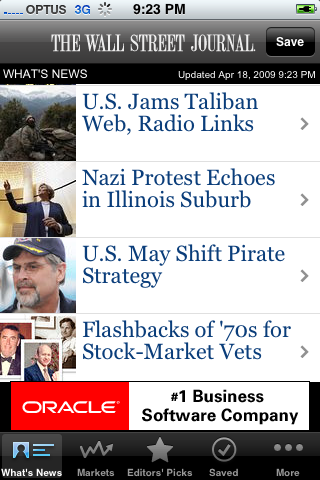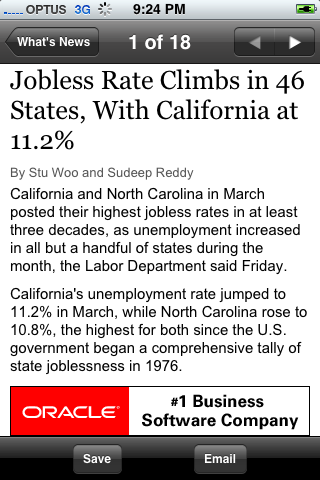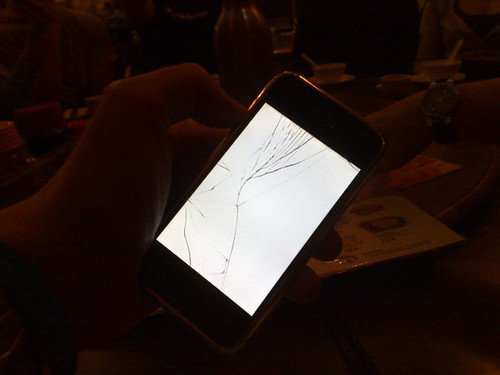For years, people who have bothered to think, have known the newspaper industry was going on a downward spiral. But now that everyone is fretting that this industry is collapsing due to sudden events, it’s time people joined the thinkers about the future of the newspaper industry because there is hope. Having spent a few days with the Wall Street Journals iPhone app, I think I see a light in the tunnel for them.
I don’t read newspapers for a simple reason: I don’t have the time to. During the day, I’m out at client sites under the pump that I barely even read the online news. After hours, I am either out or working on one of the many projects I am involved in. I might be only in my twenties and still early in my career, but my workaholism has made me busier than you think. Did you hear that newspaper exec who’s spent a decade worrying how you’d catch my generation?
Which is why the iPhone is a God-send for me. My attention is limited, and information creators need to work on my schedule if they expect me to consume – hence why the WSJ app that was released a few days ago, hits the spot for me. I am able to read the news and my emails on the go, whenever I have down time (like catching a train to work).
Just look at the screen shots. You’ll notice it’s easy for me to scan the news -like a newspaper. It allows me to mark and share the news, which is a feature that draws me to using it. In fact, it’s just plain enjoyable reading the news – the same sense of enjoyment you get from putting your feet up and reading the weekend broadsheet. Newspapers are an experience, and this application is the first time I’ve felt a digital newspaper experience reawaken that feeling.
But forget about me for a bit, because that’s not why the application has nailed it. Have another look at the screenshots, and tell me who is the #1 business software company?
As you may have heard me before, I believe advertising is a bubble economy. It’s going down, down, down – and that is the real problem with the newspaper industry, which has relied on it as it’s revenue model. However, just because I think it’s a bubble, doesn’t mean I think all advertising is dead – just some types.
The reason why advertising is not really working on the Internet, is because the traditional media relied on the assumption their audience was captured (on the Internet, they’re not). When an ad plays on the TV or the radio, there is little you can do but put up with it. Most people change the channel, but no one could prove that. Unlike the Internet, where people genuinely can ignore ads (either through banner blindness or block-out technologies)…and which can be proven because online advertising is more measureable.
The thing about mobile and why it’s so promising, is because the audience is once again captured. Because the screen real estate is so precious, any advertising that gets shown, is genuinely noticed by the consumer. The phone user has less control on manipulating their viewing experience, which they do on a desktop computer.
I actually clicked on that Oracle ad three times, which is amazing considering I rarely click on ads. The first time was because I genuinely was interested to see what was behind the link. But the other two times were because my tapping on the screen to read an article was mistaken thanks to my fat fingers. It might have been accidental, but as far as Oracle and the WSJ is concerned – I’ve just shown them engagement. And even if I don’t want to follow through on the ad, I sure as hell noticed it.



